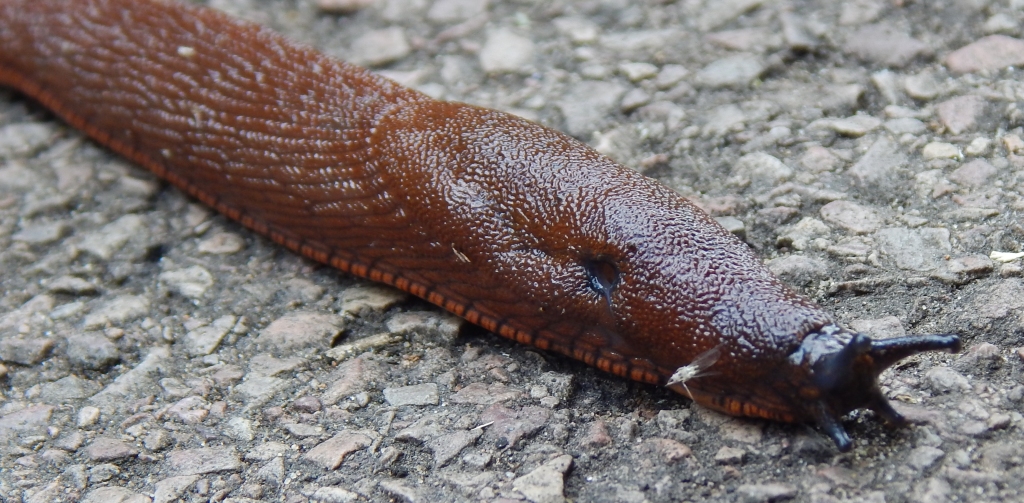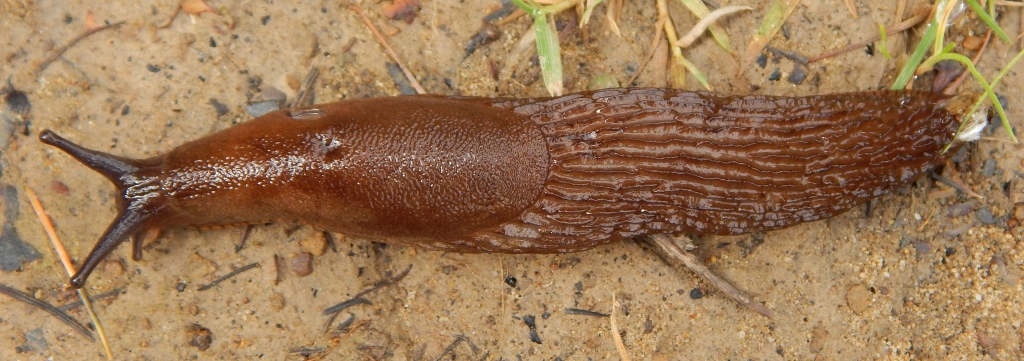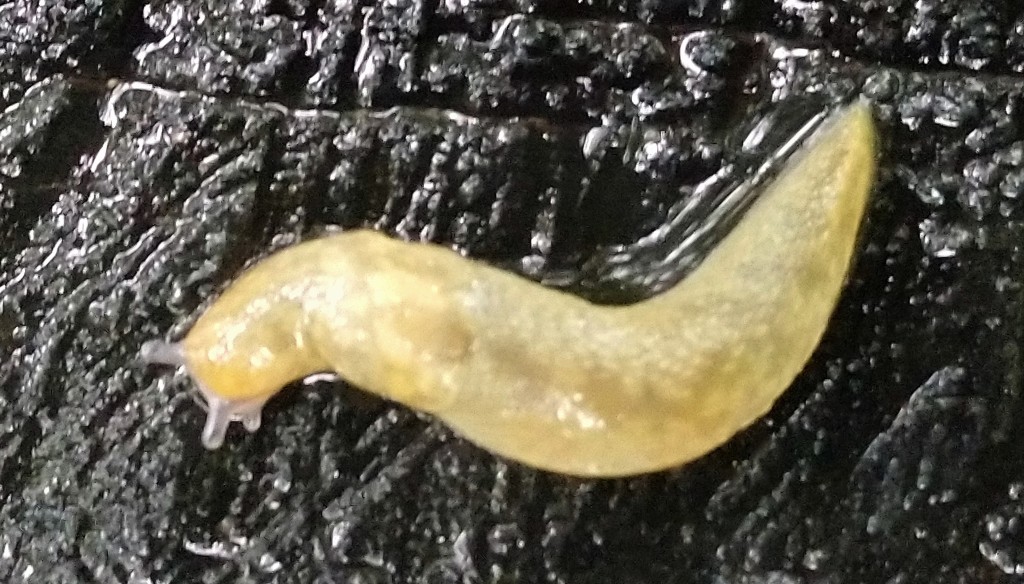
[038] Arion rufus, Red Slug
Arion ater, Black Slug
Introduction
Arion rufus, the Red Slug (or European Red Slug or Large Red Slug) and Arion ater, the Black Slug (or European Black Slug or Large Black Slug) are two species of large slugs found in Britain. They are the most common of about forty species found in Britain.
Taxonomy
Kingdom – Animals
Phylum – Molluscs
Class – Gastropods (Slugs and Snails)
Order – Stylommatophora
Family – Arionidae (Roundback Slugs)
Genus – Arion
Scientific Name – Arion rufus (Red Slug), Arion ater (Black slug)
Note that Slugs is a polyphyletic group. Several separate evolutionary lines have led to snails losing their shells (generally with an internal vestigial remnant.)
Name
The word ‘slug’ originally meant a slow or lazy person, from Norse origins.
There was an Ancient Greek poet called Arion and also a very swift, immortal talking horse in Greek Mythology. I can’t see why either of these should provide a name for a genus of slugs.
The Latin ‘rufus’ means red or reddish and ‘ater’ means dull {not shiny) black.
Description
Slugs are snails that have lost their shells. They generate mucus partly to protect themselves from dehydration. There is not much I can add to that. I’m not in the habit of examining slugs closely and I don’t suppose my readers are.
I have found pictures of four slugs from my pictures aver the last few. As this blog is all about species, I would like to be able to claim their identities precisely. Two are definitely red-brown and two are black. But colour is not a reliable identification feature and the two species are indistinguishable without minute, detailed examination. Sometimes they are considered to be subspecies of the same species.



Habitat
Both are widespread and common across Europe.
Other Notes
Snails are not organisms I usually look for but sometimes they literally cross my path out in the countryside. They do have the advantage of being easy to photograph because they can’t run away very fast and they don’t have a shell to hide in. My general impression is that you are more likely to spot slugs and snails after rain
I would like to include all British slugs in this post but you probably won’t see many. This tiny thing is the only other one I have spotted.

See also
See [172] Roman Snail and other snails.
